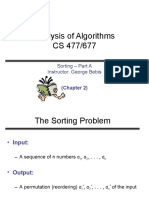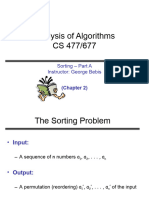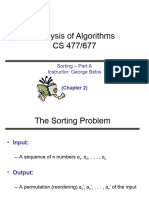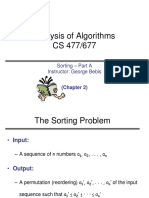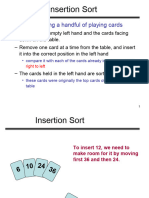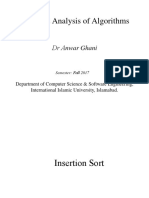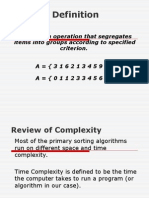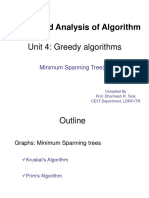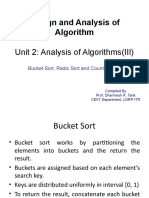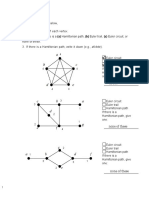0% found this document useful (0 votes)
51 views32 pagesUnit 2.2 InsertionSortBubbleSortSelectionSort
This document summarizes four sorting algorithms: insertion sort, selection sort, bubble sort, and radix sort. It provides details on insertion sort, including pseudocode for the algorithm and analyses of its best, average, and worst case time complexities. Key points are that insertion sort has good performance for nearly sorted data, with O(n) time complexity in the best case but O(n^2) time in the worst and average cases. Bubble sort is also described with pseudocode and analysis showing its time complexity is O(n^2) in all cases.
Uploaded by
Harshil ModhCopyright
© © All Rights Reserved
We take content rights seriously. If you suspect this is your content, claim it here.
Available Formats
Download as PPTX, PDF, TXT or read online on Scribd
0% found this document useful (0 votes)
51 views32 pagesUnit 2.2 InsertionSortBubbleSortSelectionSort
This document summarizes four sorting algorithms: insertion sort, selection sort, bubble sort, and radix sort. It provides details on insertion sort, including pseudocode for the algorithm and analyses of its best, average, and worst case time complexities. Key points are that insertion sort has good performance for nearly sorted data, with O(n) time complexity in the best case but O(n^2) time in the worst and average cases. Bubble sort is also described with pseudocode and analysis showing its time complexity is O(n^2) in all cases.
Uploaded by
Harshil ModhCopyright
© © All Rights Reserved
We take content rights seriously. If you suspect this is your content, claim it here.
Available Formats
Download as PPTX, PDF, TXT or read online on Scribd
/ 32



